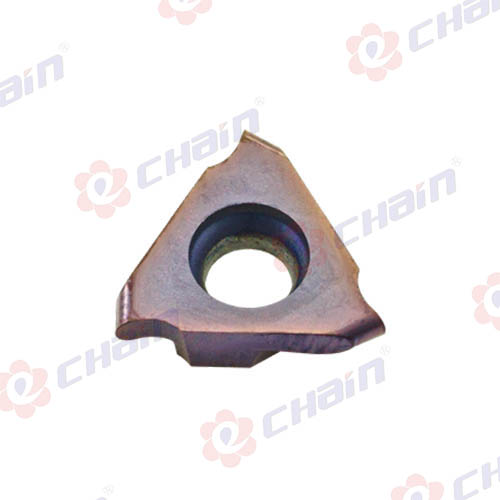Enhancing Performance: Exploring Coating Technologies for Grooving Inserts
2024-03-19
Introduction:
In the realm of metalworking, achieving optimal performance and efficiency hinges on selecting the right tools and technologies. Grooving inserts, specialized cutting tools designed for creating grooves, slots, and recesses in workpieces, are no exception. One crucial aspect of grooving insert design is the application of coating technologies, which can significantly enhance performance and extend tool life. In this blog, we'll delve into the advantages and limitations of different coating technologies applied to grooving inserts, providing insights into optimizing machining processes for superior results.
1. Titanium Nitride (TiN) Coating:
Advantages:
- TiN coating offers excellent wear resistance and lubricity, reducing friction and heat generation during cutting.
- It enhances chip flow and evacuation, minimizing chip adhesion and built-up edge formation.
- TiN-coated grooving inserts are suitable for a wide range of materials, including steel, stainless steel, and non-ferrous alloys.
Limitations:
- TiN coating may not be suitable for high-speed machining applications or cutting abrasive materials.
- It may exhibit limited performance in high-temperature machining environments, leading to premature wear or coating degradation.
2. Titanium Carbonitride (TiCN) Coating:
Advantages:
- TiCN coating offers superior hardness and wear resistance compared to TiN, making it suitable for machining hardened steels and abrasive materials.
- It provides enhanced thermal stability, allowing for higher cutting speeds and increased productivity.
- TiCN-coated grooving inserts exhibit excellent adhesion properties, ensuring long-lasting performance in demanding machining applications.
Limitations:
- TiCN coating may increase cutting forces and generate higher cutting temperatures compared to TiN, potentially affecting tool life and surface finish quality.
- It may require additional machining parameters optimization to achieve optimal performance in specific machining conditions.
3. Diamond-Like Carbon (DLC) Coating:
Advantages:
- DLC coating offers exceptional hardness, low friction, and chemical inertness, providing superior wear resistance and durability.
- It promotes smooth chip flow and evacuation, minimizing chip adhesion and built-up edge formation.
- DLC-coated grooving inserts are ideal for high-speed machining of abrasive materials, hardened steels, and exotic alloys.
Limitations:
- DLC coating may be more expensive than traditional coatings, potentially increasing tooling costs.
- It may require specialized equipment and processes for coating application, limiting availability and accessibility for some manufacturers.
- DLC-coated grooving inserts may exhibit reduced thermal conductivity compared to other coatings, potentially leading to heat buildup and thermal deformation in high-temperature machining environments.
Conclusion:
In conclusion, different coating technologies offer distinct advantages and limitations when applied to grooving inserts. Titanium nitride (TiN) coating provides excellent wear resistance and lubricity, while titanium carbonitride (TiCN) coating offers enhanced hardness and thermal stability. Diamond-like carbon (DLC) coating stands out for its exceptional hardness and low friction properties, making it suitable for demanding machining applications. By understanding the characteristics of each coating technology, manufacturers can select the most suitable option for their specific machining requirements, optimizing performance, and extending tool life in metalworking operations. As coating technologies continue to evolve, the quest for innovation and excellence in machining processes remains ongoing, driving continuous advancements in grooving insert design and performance.



